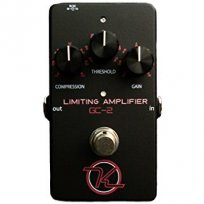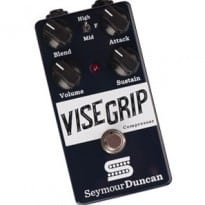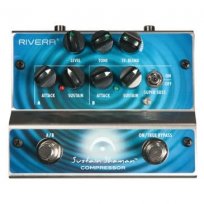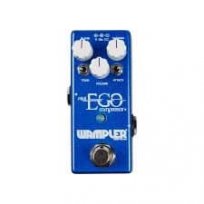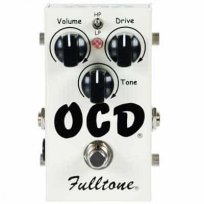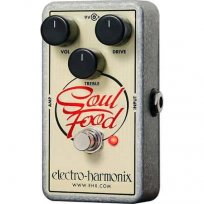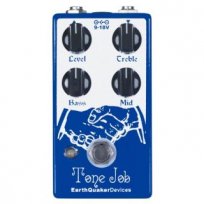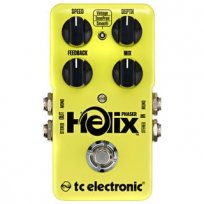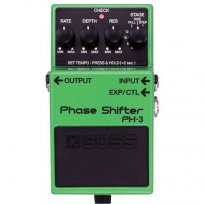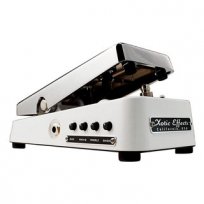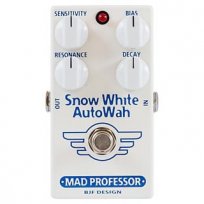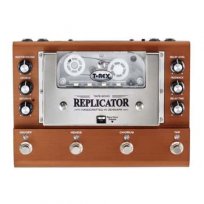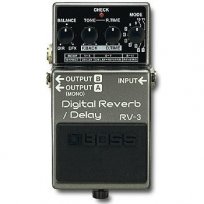
Next to metal, reggae is perhaps the most influential music genre to have entered our culture from another. Jazz, blues, rock, punk, rap…each grew up in its own U.S. subculture, while metal was a predominantly British creation.
Reggae, on the other hand, was born in Jamaica in late 1968 and quickly established itself as the island’s predominant musical form. By the early 1970s, it had already begun to influence American and British musicians, including Paul Simon, who wrote the reggae-tinged 1972 hit “Mother and Child Reunion”; Jimmy Page, who took the music’s loping beat and rocked it up for Led Zeppelin’s 1973 Houses of the Holy cut “D’yer Mak’er”; and Eric Clapton, who recorded a chart-topping cover of Bob Marley’s “I Shot the Sheriff” in 1974. Reggae went on to influence punk acts like the Clash and the Police, and, by the late Eighties, it emerged in the music of new U.S. groups like Omaha, Nebraska’s 311 and southern California’s No Doubt and Sublime. Fifty years on, the genre has lost some of its popularity but remains both durable and timeless.
The History
The roots of reggae go back to Jamaican ska, a lively, upbeat genre from the early 1960s, in which the eighth-note upbeat is emphasized. By the middle of the decade, Jamaican artists had slowed it down to a moderate-speed style they called rock steady. Reggae took the beats-per-minute down even further, to a laid-back shuffle. Occasionally, the rhythm has been given a strong 16th-note triplet feel, accented by a pair of upstroked 16th notes on the upbeats, a technique known as skanking.
The Technique
Throughout its 50-year life, reggae has been dominated by guitar. After all, it’s the instrument that outlines the upbeat syncopation so vital to the music’s feel—the thing that makes your body move. When playing rhythm, the chords are either sounded and quickly choked, or “chucked” with muted strums. Another common practice is to double the bass line one octave above it, or to play repeating single notes in a 16th-note rhythm, as on Jimmy Cliff’s 1972 hit “The Harder They Come.” Reggae also features plenty of opportunities for guitarists to solo as well as play lead fill lines around the vocalist.
The Sound
As with other genres, the sound of the guitar is as important as the technique. The essential guitar tone for reggae was established early on in the music of Bob Marley and the Wailers, the best-known reggae act to emerge from Jamaica. Wailers guitarist Peter Tosh and his successor, Junior Marvin, employed wah pedals and phasers to give their tone funk, while adding overdrive for grit and warmth and to help carry their leads over the pulsing bass and drums. Delay and reverb were typically added on record by the studio engineers, giving the guitar pronounced depth and dimension. There have been variations on the recipe over the years—Police guitarist Andy Summers liked to slathered his skank with shimmery chorus—but the basic formula remains unchanged.
The Effects
If traditional reggae guitar tone is what you’re after, there are five effects you can’t do without: compression, wah, phaser, distortion and delay. (As noted above, reverb is also part of the package, but if your amp doesn’t have it, you can always use a combination delay-reverb pedal to help keep your pedals to a minimum.) Let’s unpack these, discuss how they’re used in reggae, and explore some pedals that can help us get the perfect reggae vibe.
COMPRESSION PEDALS FOR REGGAE
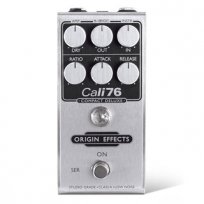
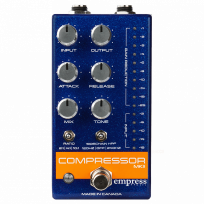
Compression pedals are marvels that come in very handy for playing reggae. They can even out dynamics and increase sustain, which is perfect for creating those sinewy lead lines like Peter Tosh plays in Bob Marley and the Wailers’ “Concrete Jungle.” Compression can also assist the front end of the signal by giving definition to the attack. This creates a bright and articulate “snap” that can help your guitar cut through cleanly, which is extremely important in reggae guitar.
Compression comes in many flavors, but basically what you want here is something with a fast response. Optical and tube compressors are probably too slow for reggae. Better choices would be VCA or FET devices. VCA (Voltage Controlled Amplifier) compressors have a clean sound, are less likely to color your tone, and offer precise and responsive performance. FET (Field Effect Transistor) compressors are similar, though they can impart color, particularly if you crank up the input level, or if the pedal has a power transformer. Not many FET pedals have a power transformer, though you can purchase the Origin Effects Cali76 Compressor pedal with the transformer option (now discontinued but available used). Check out the models below, which include the Origin Cali76 Compact Deluxe (FET), Empress Effects Compressor (FET), Keeley Electronics GC-2 Limiting Amplifier (VCA), Seymour Duncan Vise Grip (VCA) and Rivera Sustain Shaman (VCA). You can also compare the Origin Effect Cali76 and Keeley GC-2 Limiting Amplifier in this video.
Another alternative is an OTA, or Operational Transconductance Amplifier, compressor. The MXR Dyna Comp is a classic OTA compressor that’s been copied countless times. OTA compressors are fast, but have several downsides, including high noise and tone coloration in the form of reduced highs. Some can also step on your lead transients, unless they have a variable attack control. Many modern iterations—including the Wampler Ego and Mini Ego compressors, which you can see in action below—have improved upon the design and eliminated these issues, so don’t count out an OTA compressor if you play reggae.
—
OVERDRIVE PEDALS FOR REGGAE
Reggae guitar favors clean rhythm work, but that doesn’t mean you should neglect your overdrive pedal. A good dirt stompbox can add a bit of sizzle to help your chords cut through, or impart warmth when you need it. Overdrive is also just the thing you need for lead work to add some grit and smooth sustain.
The goal here is to choose an overdrive that has a wide range—subtle enough for rhythm and cutting enough for lead. Depending on the mood of the song, you may want a bright cutting tone, or a warmer tone that sits in the mix, so look for a pedal with tone control. The Fulltone OCD is transparent and has a voicing switch that gives it lots of versatility. The Electro-Harmonix Soul Food is also transparent as well as detailed and has a Treble knob to let you fine tune its bite. For ultimate versatility, EarthQuaker Devices Tone Job has Bass, Mid and Treble to give plenty of tone-shaping possibilities.
—
PHASER PEDALS FOR REGGAE
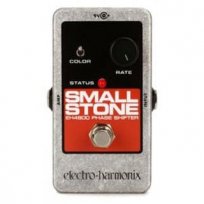
Phase shifters have been an essential part of the reggae guitarist’s arsenal since the 1970s. The phaser is typically set to cycle slowly, so that each guitar skank has a slightly different tonal character from the one preceding it. A subtle phase is fine, but to add more pronounced vowel-like tones, look for a pedal that allows you to dial in varying degrees of depth. The TC Electronic Helix has both Depth and Feedback controls. The Boss PH-3 is a favorite of many players and offers vintage and modern phasing as well as funky step filters. There are also tried-and-true phasers like the Electro-Harmonix Small Stone and MXR Phase 90, as well as many other options, so shop around and see what works for you.
—
WAH PEDALS FOR REGGAE
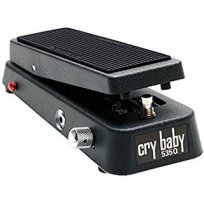
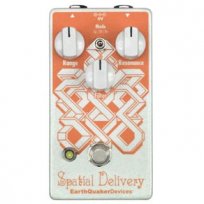
One of the most versatile tools on the reggae guitarist’s pedalboard is the wah. In addition to rocking it in traditional manner, many reggae players like to use it as a static tone control, cocking it into position and leaving it there. The video below demonstrates these techniques.
If you’re looking for ultimate versatility in a wah pedal, you can’t go wrong with the Dunlop 535Q Multi-Wah, which features a six-position Range Selector, a Variable Q control, and a switchable boost circuit so you can dial in the ultimate wah tone. Xotic Effects’ Wah XW-1 is another versatile and configurable wah. The Electro-Harmonix Cock Fight Plus combines wah and fuzz in one expressive pedal and gives you yet another way to put some grit into your tone. As with phasers, there are tons of wah pedals to choose from, so check out your options.
Alternatively, some guitarists like the idea of using an auto-wah for reggae lead work. Auto-wahs respond to pick dynamics, allowing you to create degrees of squawk and honk by varying your attack. If you’re interested in an auto-wah, the Mooer Funky Monkey Digital Auto Wah offers three modes and has a small footprint that takes up less real estate than standard pedals. The Mad Professor Snow White Auto Wah features fast and accurate tracking and has plenty of controls, including a Decay knob that lets you determine how quickly the filter effect returns to its resting point. The Earthquaker Devices Spatial Delivery Envelope Filter has three modes, including a Sample-and-Hold setting that explores the outer reaches of wah with funky ring-modulated-like tones. You can check out all of these pedals below.
Delay and Reverb
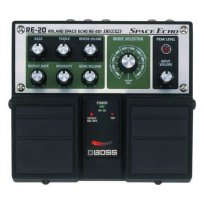

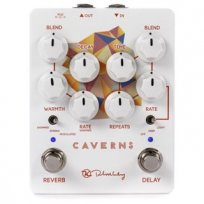
In reggae, the key to delay is all in the timing. The echo should fall on a 16th note or, if the reggae is played with a triplet rhythm, on the last of the three 16th notes. You don’t need tons of regeneration or repeats—you just want that first echo to cut through, with a few softer decaying echoes after it so that they don’t interfere with subsequent chord stabs. Here’s a video that takes you through some techniques.
In terms of tone, you want a darker echo, similar to traditional tape delay, to create the authentic early-1970s reggae/dub vibe. The T-Rex Replicator Analog Tape Delay is the real deal, featuring an analog tape cassette and two playback heads. However, it is expensive and large. If your budget and pedalboard real estate run on the small side, Strymon’s El Capistan dTape Echo offers an amazingly accurate recreation of tape delay, while the Boss Space Echo (now a modern classic) emulates the popular Roland RE-201 Space Echo tape delay.
If your amp doesn’t have reverb, or if you’re unhappy with the sound of its reverb unit, there are a number of pedals that combine delay and reverb. Options include the Boss Digital Reverb/Delay RV-3, EarthQuaker Devices’ Avalanche Run and the Keeley Caverns, all of which have tone controls to let you roll off the high end. You can check out all the pedals mentioned here below.
—
Have a favorite reggae pedal we didn’t mention? Tell us in the comments section below. —Christopher Scapelliti















